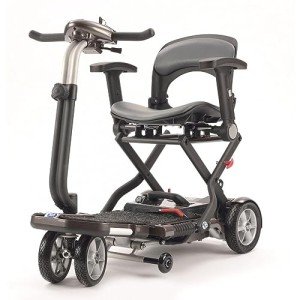8 Tips To Up Your Mobility Devices Game
Understanding Mobility Devices: Enhancing Independence and Quality of Life
In today's busy world, the desire for mobility is universal. Nevertheless, certain medical conditions or age-related obstacles can impede movement, leading to an ongoing search for assistance. Mobility devices function as vital tools to improve independence, enhance quality of life, and make it possible for people to engage completely in their neighborhoods. This short article offers a comprehensive overview of mobility devices, including their types, functions, choice requirements, and more.
Kinds Of Mobility Devices
Mobility devices range from simple aids to intricate devices, customized to satisfy different needs. Below is a table summing up common types of mobility devices:
Type of Device
Description
Ideal For
Walkers
Four-legged support devices that offer exceptional stability while walking.
Individuals needing extra assistance.
Walking sticks
Single or three-legged sticks that improve balance and support walking.
Those with slight mobility problems.
Wheelchairs
Seats mounted on wheels, readily available in manual and electric versions.
Individuals with minimal or no mobility.
Scooters
Electric lorries created for outdoor usage and ease of navigation.
Those who can't stroll fars away.
Crutches
Devices that help people move weight far from a hurt leg.
People recuperating from leg injuries.
Rollators
Walkers with wheels, seats, and brakes for improved mobility.
Users requiring rest alternatives while walking.
Lift Chairs
Reclining chairs that help users in standing up and taking a seat.
Seniors or those with mobility restraints.
Mobility Scooters
Small electric vehicles for limited mobility, frequently utilized outdoors.
People requiring support over long distances.
Key Features of Mobility Devices
When selecting a mobility device, several key features should be considered to ensure optimal performance and ease of use:
- Weight Capacity: Understanding the gadget's weight restriction is crucial for safety and efficiency.
- Adjustability: Devices ought to be adjustable in height and width to fit the user comfortably.
- Portability: Lightweight and foldable alternatives are important for users who travel or require transportation.
- Stability and Safety: Look for functions like anti-tip wheels and strong structures to boost security.
- Relieve of Use: Simple systems and user-friendly designs can make a significant difference in daily usage.
- Convenience: Ergonomic styles and padded seats can improve the user experience.
Choosing the Right Mobility Device
Choosing the best mobility device can be a challenging job. Here are some actions to assist the decision-making process:
- Assess Needs: Evaluate the person's mobility challenges and day-to-day activities.
- Speak with a Professional: Engage health care professionals who can offer recommendations based on the person's physical condition.
- Trial Options: If possible, trial various devices to determine comfort and performance.
- Review Budget: Consider the cost of the gadget, including any extra features or adjustments needed.
- Research Options: Determine the best brand names and models by checking out reviews and comparisons.
Table: Comparative Analysis of Popular Mobility Devices
Device
Advantages
Drawbacks
Walkers
Excellent stability, promotes walking.
Bulky, may restrict motion in small spaces.
Walking canes
Lightweight, boosts balance.
May not supply sufficient support for serious mobility concerns.
Wheelchairs
Perfect for those with significant mobility constraints.
Can be troublesome, particularly in indoor environments.
Scooters
Great for outside use, simple to maneuver.
Minimal indoor usability, much heavier.
Rollators
Provides rest option, simple to move.
May require more area than conventional walkers.
Lift Chairs
Comfortable, assists transition from sitting to standing.
More costly, larger footprint.
Often Asked Questions (FAQs)
1. What is a mobility device?
A mobility device is any tool designed to assist individuals in moving and navigating their environment. This includes walkers, wheelchairs, scooters, and crutches.
2. How do I know which mobility gadget is best for me?
Consider your specific mobility challenges, physical capabilities, and way of life requirements. Consulting with Bethany can also provide customized recommendations.
3. Are mobility devices covered by insurance?
Lots of insurance coverage plans, including Medicare, may cover specific mobility devices. It's crucial to inspect with your insurance coverage supplier for specific coverage information.
4. Can I rent a mobility gadget instead of purchasing one?
Yes, numerous medical supply stores and drug stores use rentals for mobility devices. This alternative is helpful for individuals with temporary mobility problems.
5. How can I keep my mobility gadget?
Routine maintenance is vital. It consists of cleaning the gadget, checking for wear and tear, and guaranteeing all parts are working properly.
The Impact of Mobility Devices on Quality of Life
Mobility devices considerably enhance the lifestyle for individuals with minimal mobility. They promote independence, encourage social interaction, and boost access to necessary services and recreational activities.
- Increased Independence: Users can navigate their areas, go to events, and engage in hobbies without relying on others.
- Social Engagement: Mobility devices assist in participation in celebrations, thereby combating feelings of seclusion.
- Boosted Safety: Devices provide stability and decrease the danger of falls, promoting user self-confidence.
Mobility devices are more than simply tools for movement; they are gateways to independence and quality living. By understanding the various kinds of mobility aids available, their key features, and factors to consider for choosing the right gadget, individuals can make educated choices about their mobility requires. Eventually, the best mobility gadget can result in a more active, fulfilling life. Whether it's a walker, wheelchair, or scooter, the best option contributes significantly to enhancing the mobility and independence of users.
